Hawaii is home to a diverse range of bird species throughout the world.
Although Hawaii is an American state, most of the birds found there are unique to North America.
It’s impossible to estimate how many species exist in any one location. The present official state list includes 337 species. Surprisingly, just 64 of them are native to Hawaii, whereas humans imported 130, and 52 were accidentally introduced.
Many native Hawaiian species may now only be found in distant woods and hilly places, while the species usually observed in urban areas are either introduced or unintentionally introduced.
| Image | Name |
|---|---|
 | Anianiau |
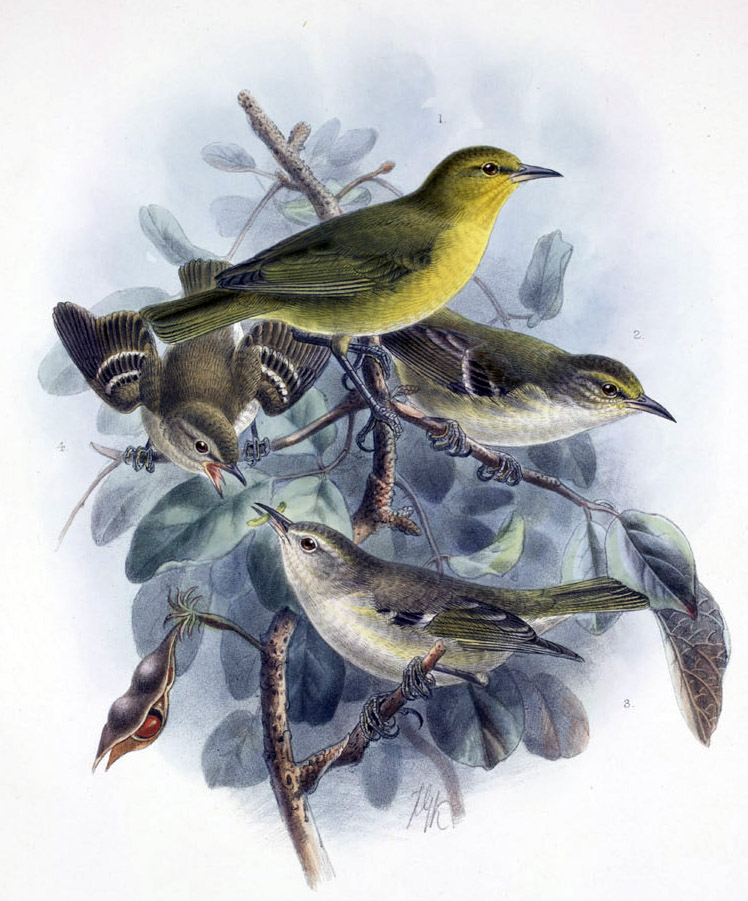 | Oahu Alauahio |
 | Iwi |
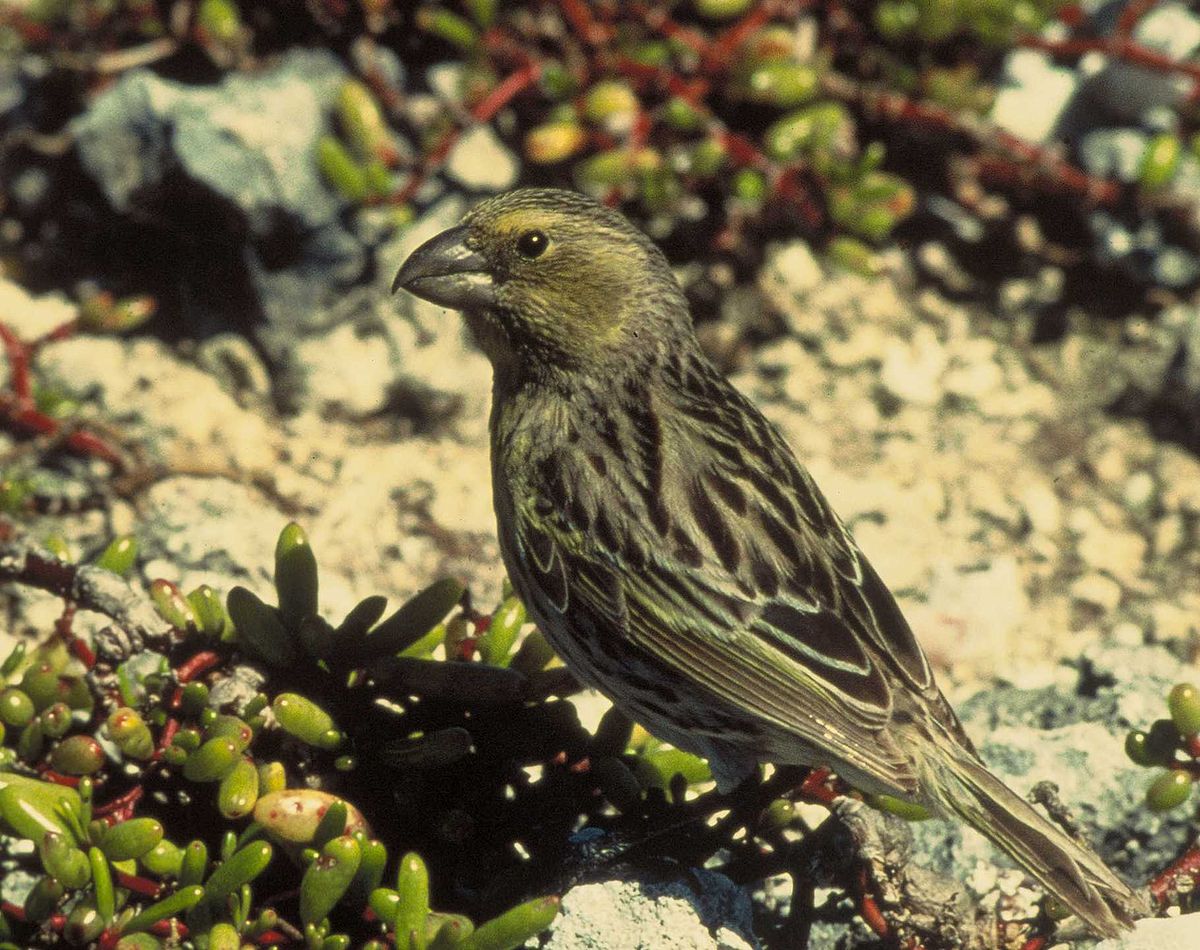 | Laysan Finch |
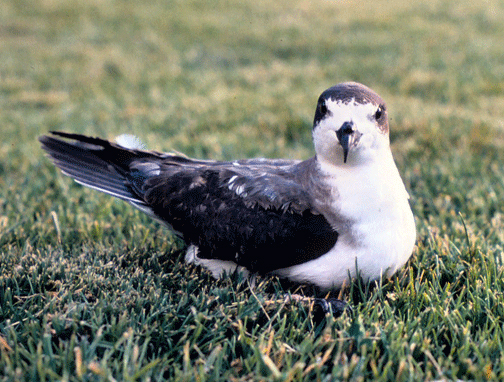 | Hawaiian Petrel |
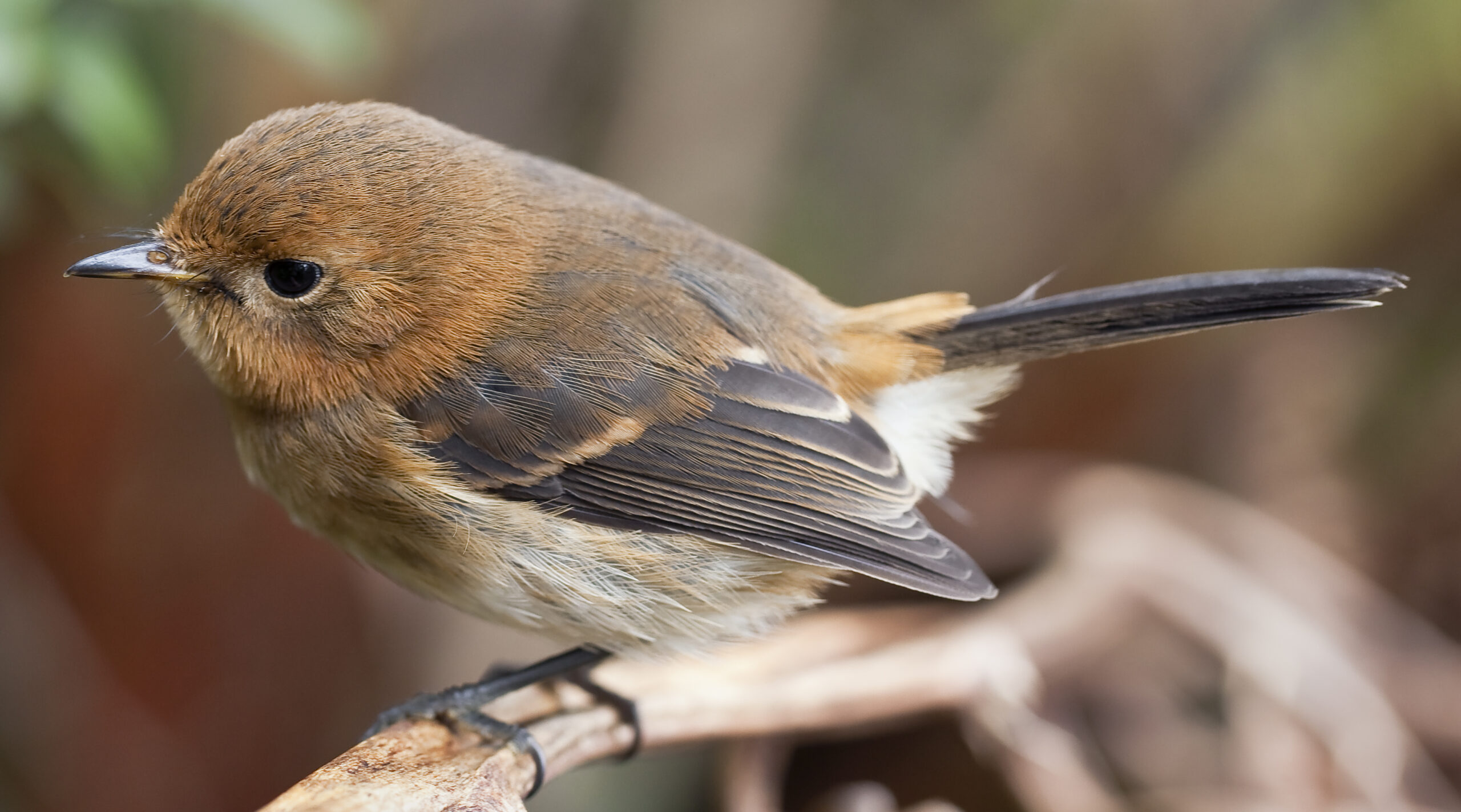 | Kauaʻi Elepaio |
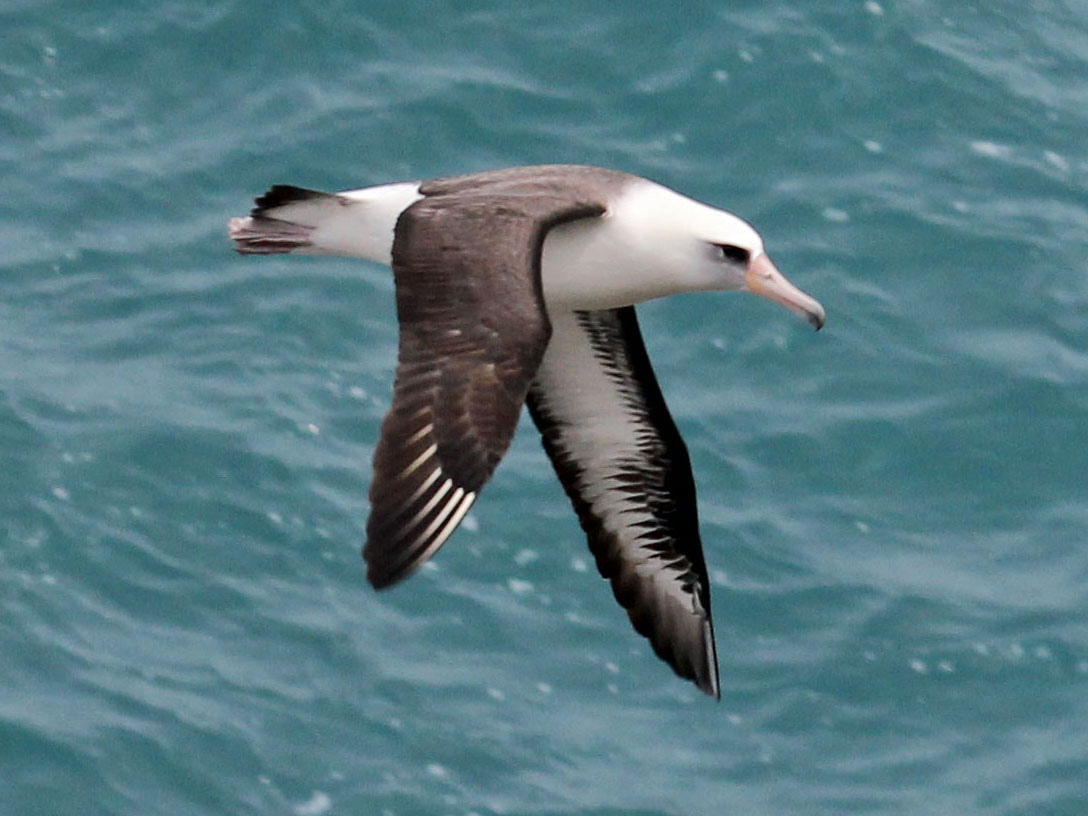 | Laysan Albatross |
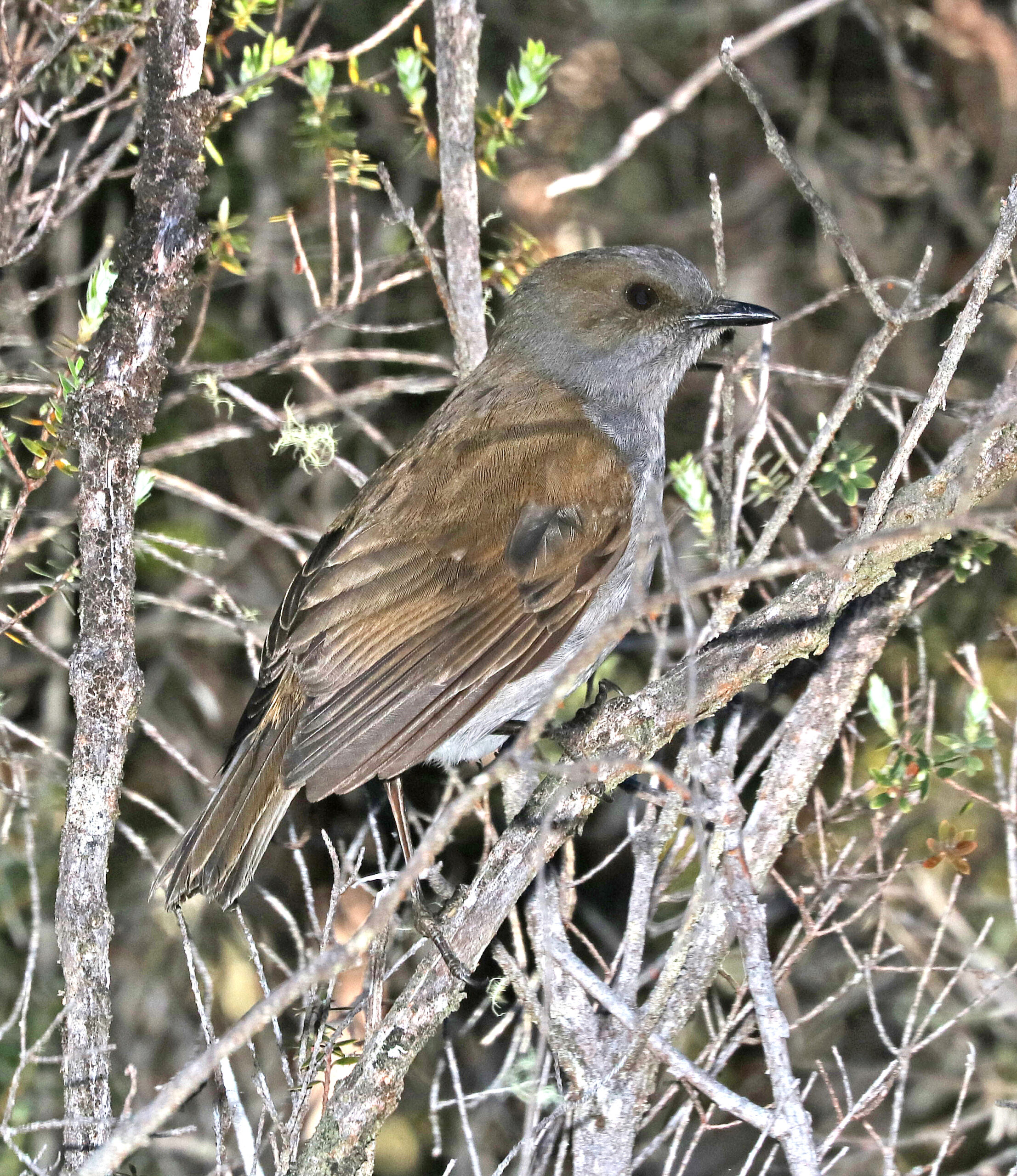 | Omao |
 | Akikiki |
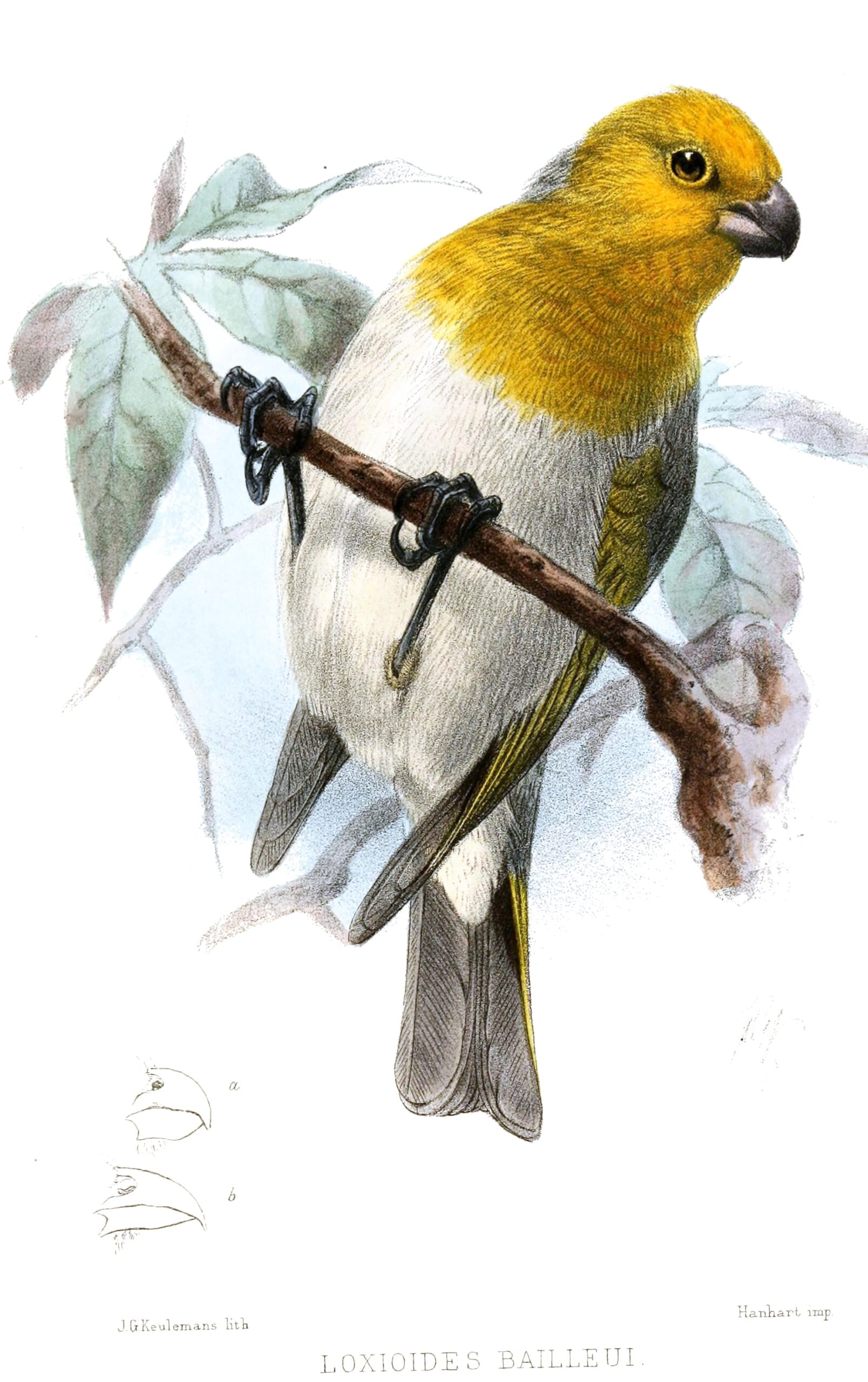 | Palila |
 | Hawaii Akepa |
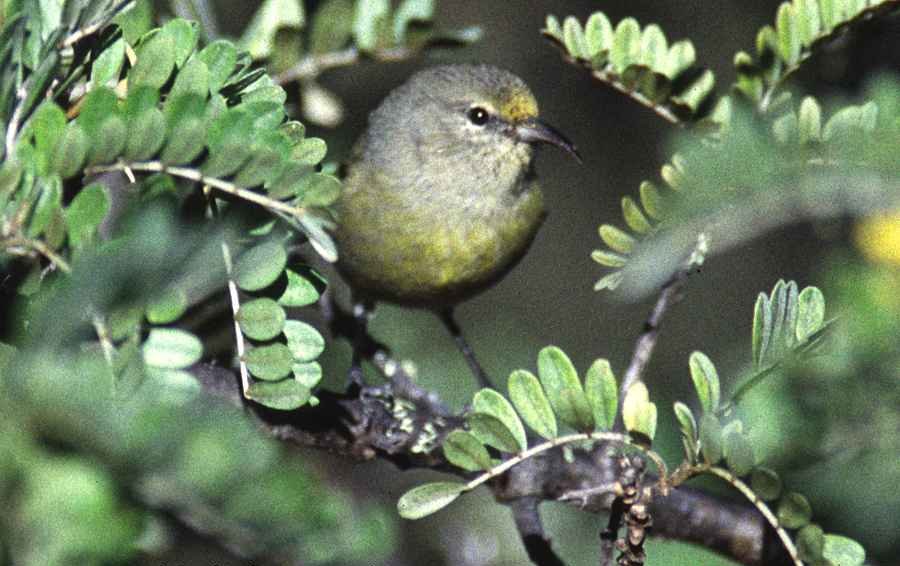 | Oahu Amakihi |
 | Hawaii Amakihi |
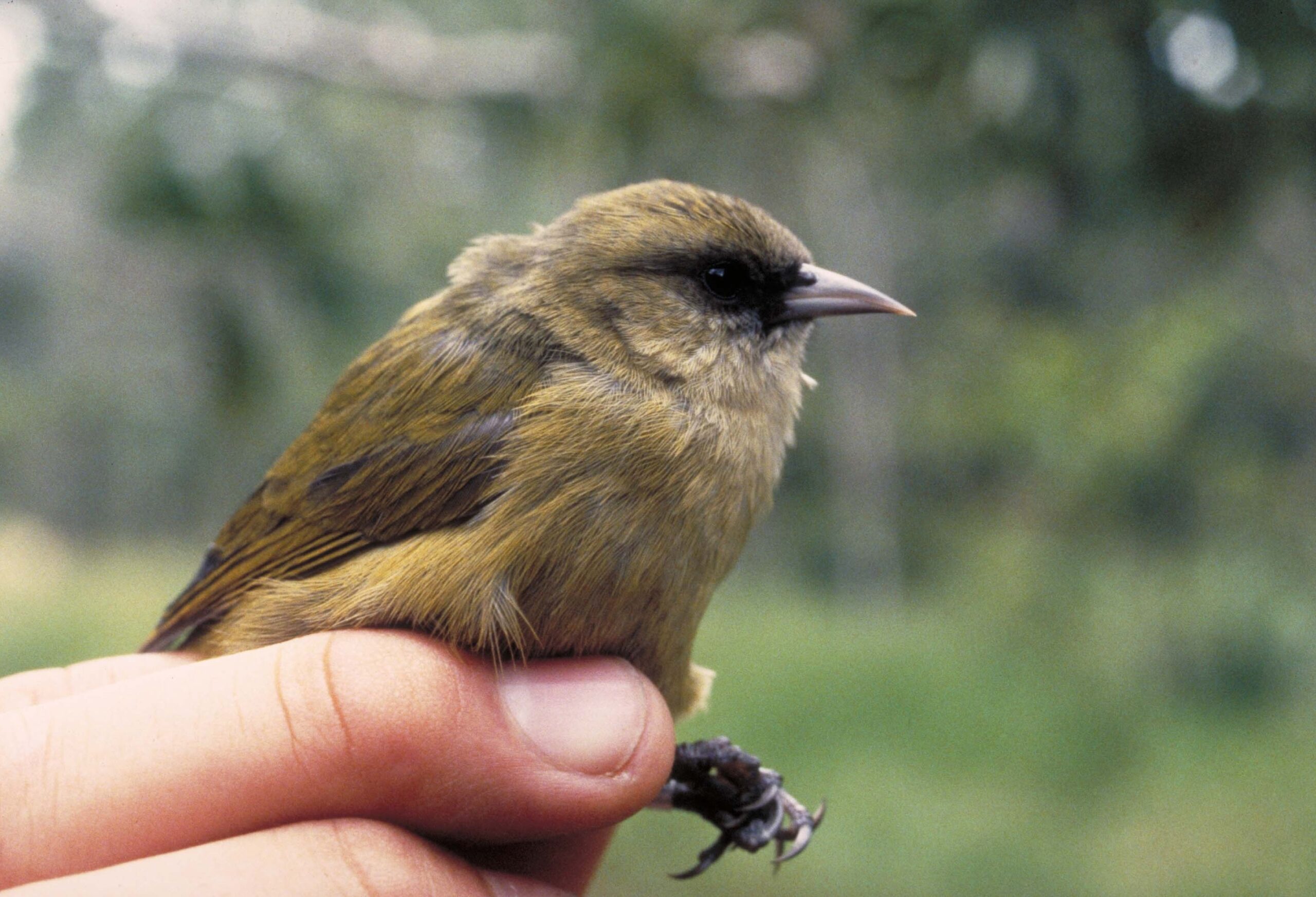 | Hawaii Creeper |
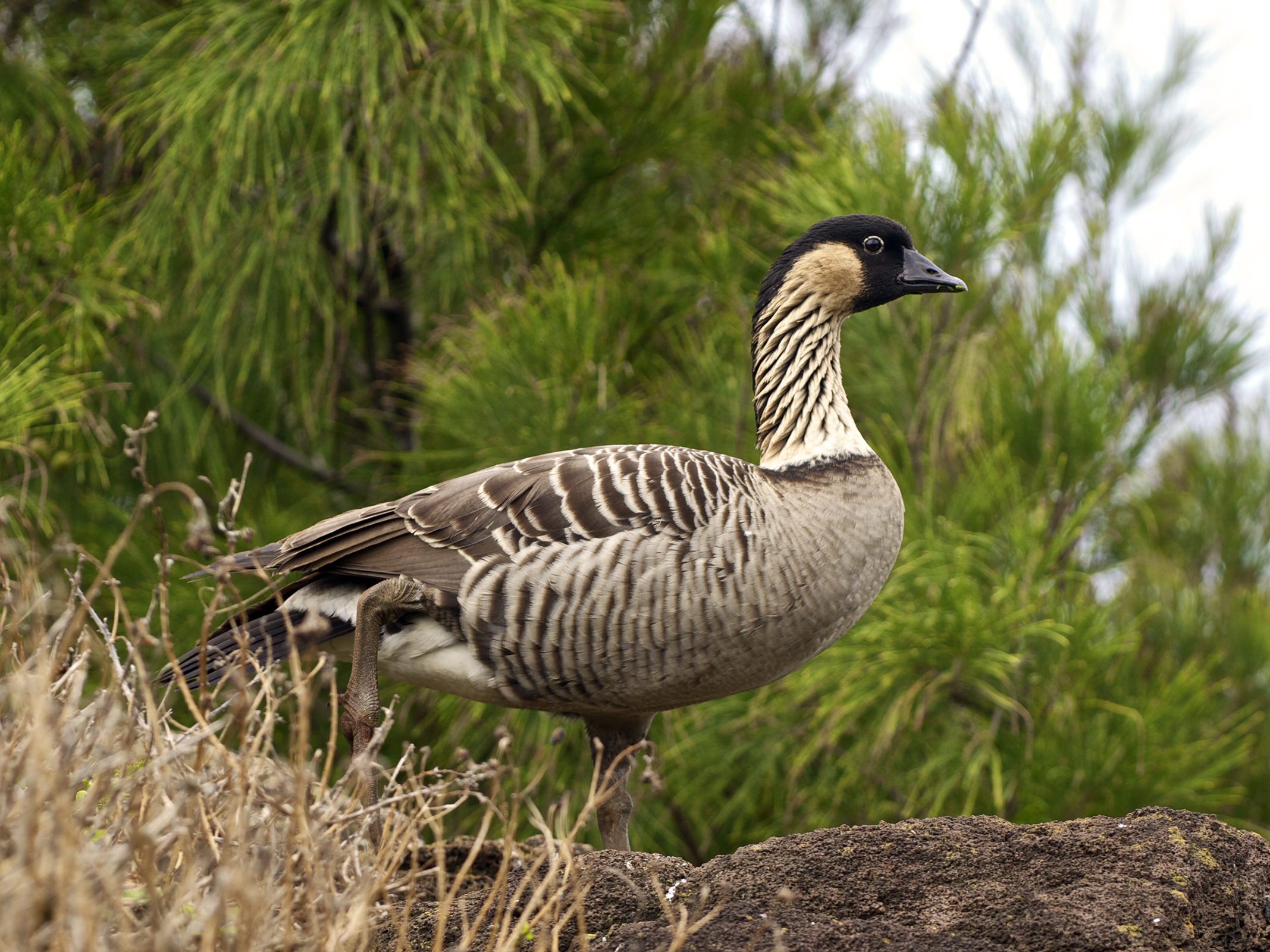 | Hawaiian goose |
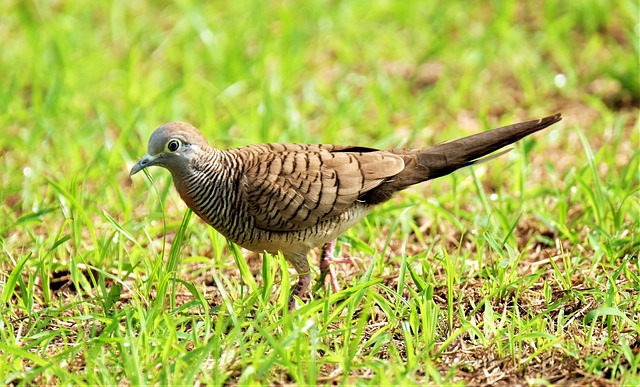 | Zebra dove |
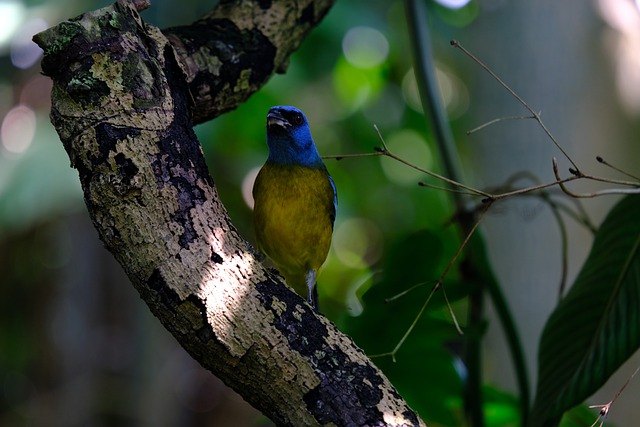 | White-rumped Shama |
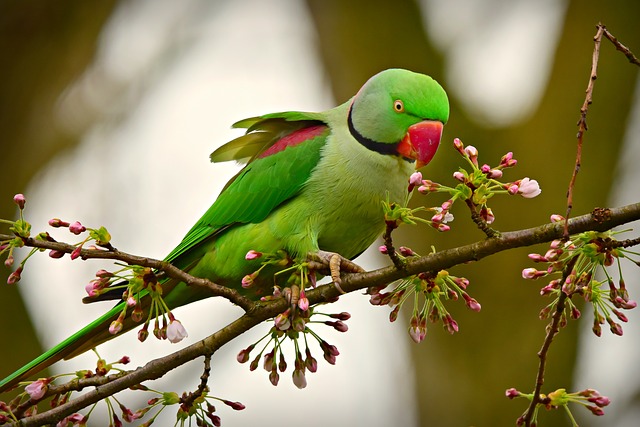 | Rose-Ringed Parakeet |
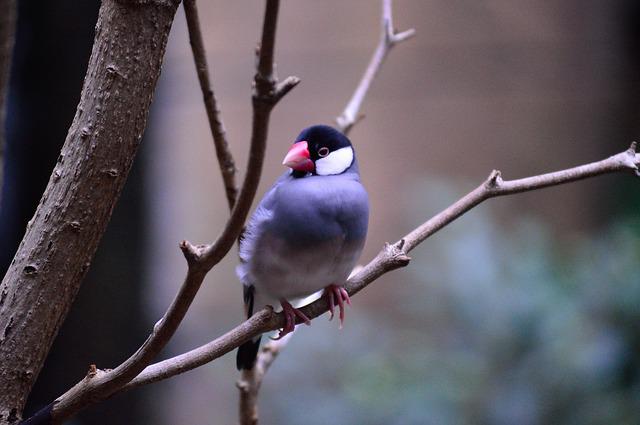 | Java sparrow |
 | Red-whiskered Bulbul |
Common Birds of Hawaii
1. Anianiau

Anianiau is a brightly colored little bird with yellow rear ends, faces, and underbellies. Their notched tails and pointed wings, on the other hand, are gorgeous blackish-gray with a wonderful golden edge.
They have lengthy, curved bills that are a blend of black and grey with a hint of pink, as well as highly specialized tongues.
Length & Food
This avian is the tiniest Honeycreeper in Hawaii. Their length can measure up to 4 to 4.5 and 6 to 7 inches in wingspan. Anianiau eats nectar, although they also like hunting among tree branches for spiders or their eggs.
2. Oahu Alauahio

Males are generally olive-green at the upper part and yellow on their undersides, while females tend to be gray and green from the top side with a blend of white.
Females will demonstrate a white wing bar on each wing which will be absent on the male. They have short, sharp at the end wings and short, notched tails and have intermediate length, slightly curved bills, which may be pink or a blend of pink and black.
This highly threatened Honeycreeper is found wandering only on the isle of Oahu and prefers areas with thick forest where it may get a chance to eat the tasty insects within, forage by cunningly removing tree bark.
These birds are also known to consume earthworms and snails and insects.
3. Iwi

The Iwi is an attractive bird with a deep and long history in Hawaiian culture. They have black tails and short sharp wings that are black beginning underneath the shoulder area, and they are almost totally red. They have striking red bills that are long and bent drastically down on their faces.
This bird is around 5.5 inches long and has a length of 7 to 8 inches. Look for these well-known birds on the Hawaiian islands of Oahu, Maui, Kauai, and Molokai, where their beloved lobelia flowers may be found.
When the Iwi bird isn’t sipping nectar, it catches and eats butterflies, insects, and tiny crustaceans.
4. Laysan Finch

The Laysan Finch, sometimes known as the ‘Laysan Canary,’ is another Hawaiian Honeycreeper. Yellow and grey backs, short, pointed wings of the same hue, and perky, moderate tails characterize these brilliant tiny birds.
This bird’s ventral underside is white, becoming bright yellow at the breast, and it has a yellowish facial appearance with a grey ‘collar’ at the neck and rigid, bent grey bills in a curved shape. These Finches have a wingspan of around 12 inches and a length of about 7.5 in from tip to tail.
This species may be located in a range of habitats, including grassland, shrubby regions, dunes, and even lagoons. They are endemic to Laysan Island and may be found throughout the northwest Hawaiian Islands.
Laysan Finches have a wide variety of foods in their diet, including bugs, seeds, and seabird eggs. The ingestion of carrion is a fascinating survival feature they’ve evolved.
5. Hawaiian Petrel

Hawaiian Petrels have grey backs and grey tops with white undersides on their long wings. They feature a white rump, underside, breast, and short grey tails.
The front of these birds’ faces is white, while the crest and back of their heads are grey in hue. The bills of these birds are long and hooked. These birds have a wingspan of 33 inches and a body length of about 17 inches.
These Hawaiian seabirds can be found in the Hawaiian islands, Maui, Kauai, and Lanai. However, they can migrate a significant distance, with some being recorded as far as Oregon, California, and Washington.
Petrels have various things to fill their appetite, including squid and fish, and start their foraging just after the sun goes down.
6. Kauaʻi Elepaio
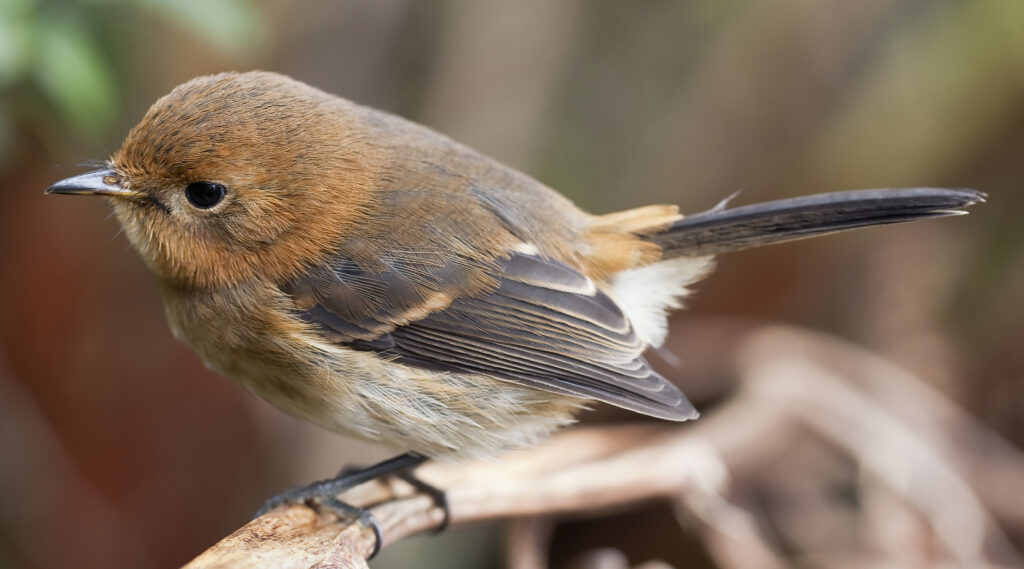
Elpaios in Kaua’i is a fast-flying bird. Their backs are light grey, and their short, rounded wings are darker grey or grayish-brown in the bottom part. Each wing has two white wing bars, and these species have lengthy, rounded tails.
The rump is white, visible from both beneath and above, and the underbelly is white, while the breast is a warm cinnamon hue that continues upwards and separates after a white patch at the chin. With a narrow cinnamon line going to the beak and one that bends all around the face to the top and rear of the skull
The rest of the head is grey, except for lighter grey around the eyes, which is rather frequent. The beak of these birds is short and slightly curled black.
Size
These birds range in size from 5.25 to 5.75 inches long and also have wings up to 8 inches. The biggest population of these birds may be located in Koke’s State Park and the Alaka’I Plateau, which are located in lush Kaua’i forests between altitudes of 2000 and 3600 feet.
Food
The food of Kaua’i Elpaios consists of spiders and insects.
7. Laysan Albatross
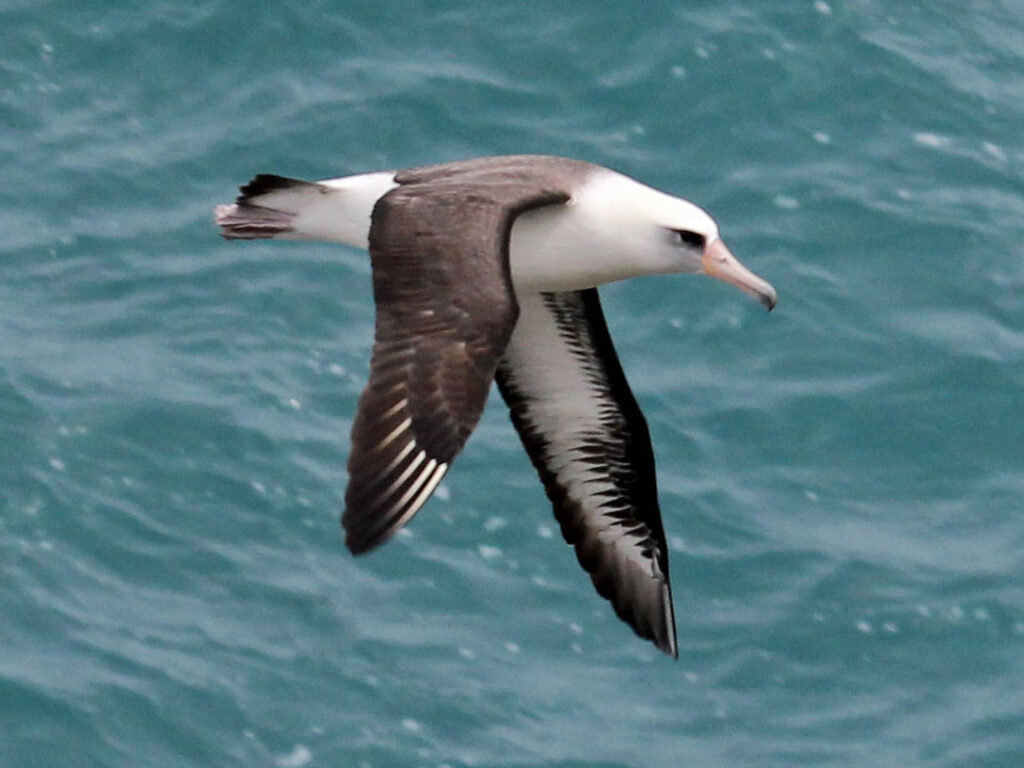
The Layson Albatross has a back with a blend of grey and black and enormous wings that are blackish-gray from above but have a prominent white on the undersides and a tiny tail. This bird has a white underside, breast, and face, as well as a unique eye stripe that you will recognize.
These birds have lengthy orange bills with black tips and hooked ends that make them very effective at catching their prey.
Length
The typical length of these enormous birds is 32 inches, with wingspans of 6 feet or more. In the Hawaiian Islands, it is the second most common seabird.
These birds do migrate and may be seen in places like the French Frigate, Mexico, and Japan. Small fish aquatic invertebrates are their most preferred meals.
8. Omao

The Omao has a dark brown back and medium-length brown wings that are rounded on the undersides and light grey on top. The stomach and chest of these birds are grey with a light skirting of buff color immediately under the wings, and they have short, rounded tails.
They have grey chins and grey foreheads, with a combination of browns and greys for the rest of their faces. These birds have black beaks that are straight and modest in length. These birds have wings of 8 to 9 inches and a length of around 7 inches from tip to tail.
Range
These birds are most usually seen in the Big Island Rainforest, although they have also been seen in Mauna Loa and savannah areas. They tend to eat invertebrates and snails, and they are also very much inclined to eat sweet fruits.
9. Akikiki
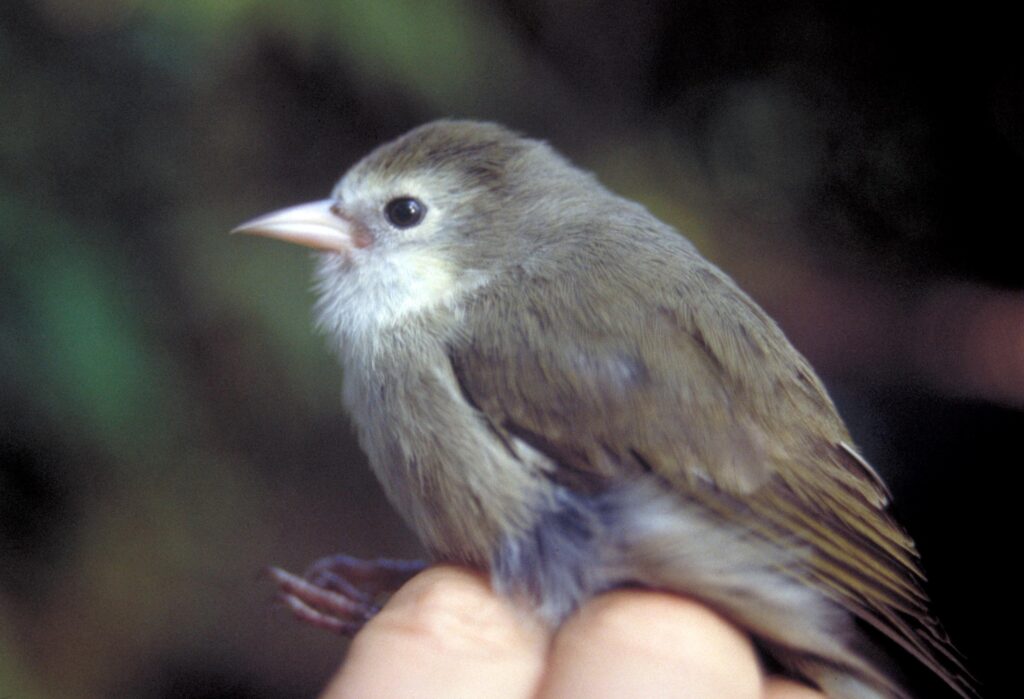
The Akikiki has a velvety grey back, pointed medium-length grey wings, and a short grey tail with a fan shape. This bird’s underside is a pale brownish-grey that turns white at the chest and moves up into the head, where it may be seen in the jaw and cheeks until mid-eye.
The upper section of this bird’s head is grey, and it has a pinkish-yellow beak that is pointed, curved, and medium in length. Their wingspan is around six to seven inches, and their height is roundabout five inches.
These birds are solely found on Kauai and spend all their time in high altitudes in jungles. The Akikiki feeds on spiders and other jungle arthropods that this fast bird can grab.
10. Palila
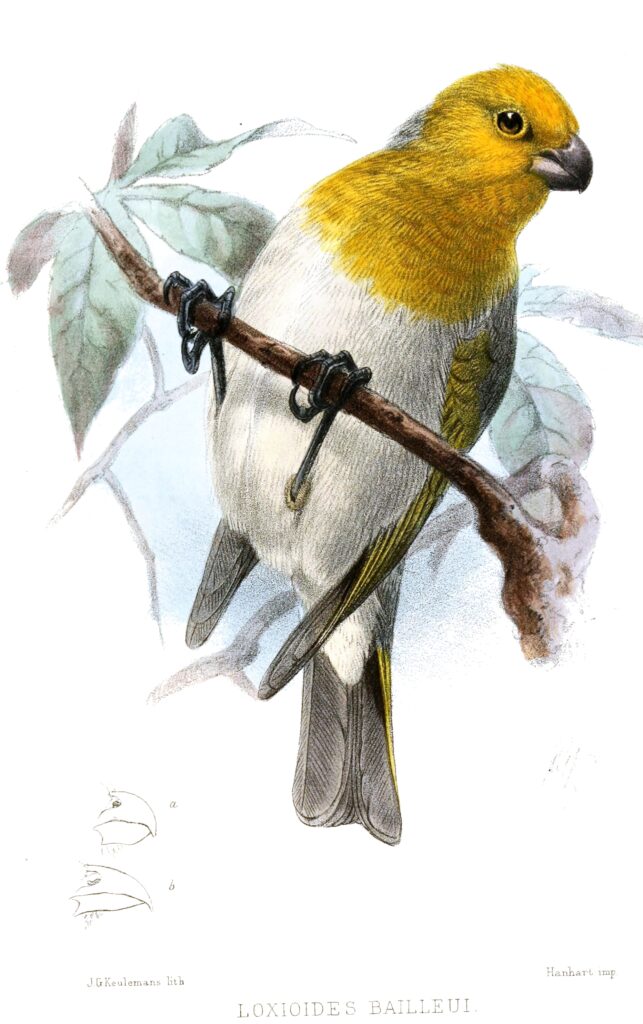
They have a grey back, rounded medium-length grey wings, and a moderate-length fan-shaped tail. Apart from a huge, yellow bib emanating from the bird’s bright yellow face, the wings and tail have a yellowish-green edge pattern, while the underside and chest of this bird are a pristine white. This bird has a thick, conical black beak and wears a black half-mask over its eyes.
The typical length of these birds is 6 to 7 inches, with wingspans of 8 to 9 inches. The only place where they can be seen is Oahu, a small place on the Hawaiian island. The Alila consumes moth larvae, a highly specialized diet of the deadly Mamae plant’s seeds and leaves. It can eat them without harming itself.
11. Hawaii Akepa
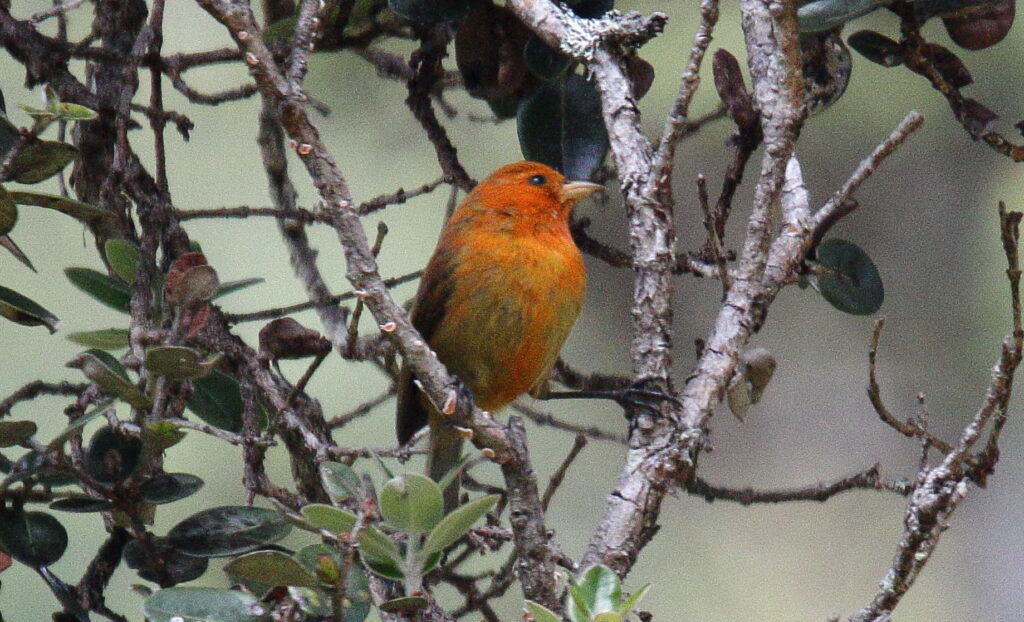
The vibrant Hawaii Akepa. Male Akepas have bright red to orange and redbacks and tiny, pointed wings that are red at the shoulder but become reddish-black below this level. The belly region and breast of this bird will be dynamic red or a shade of red with orange, with small, notched tails that are identical to the coloration of the upper part but grey at the underside.
This bird has a solid red face and a sharp, slightly curved medium-length yellow-orange beak. Instead of being red, female Akepas will be olive green or light canary in hue. These little birds have wingspans of roughly 2.75 inches and are around 4 inches long from tip to tail.
These small, brightly colored songbirds can only be found on Hawaii’s Big Island, and they’re the only birds known to nest in tree holes there. The Hawaii Akepa’s diet consists mostly of caterpillars, although it will also eat spiders and insects if its preferred food source is unavailable.
12. Oahu Amakihi

The Oahu Amakihi has a yellow back and a short, rounded grey tail, and medium-length rounded wings with grey tips. The top section of the rump also has some olive hue. The underneath of the rump is white, and this continues into the chest, where a light yellow bib is sewn on that thins down until it reaches behind the chin.
The cheeks and rest of the bird’s head are a deeper olive hue, and a narrow, black eyeliner runs up the rear of the head but stops just short of the back. The beak of this bird is medium in length and prominently bent.
Length
These little Honeycreepers have wingspans of around 6 to 7 inches and are just 4.2–4.5 inches long.
Habitat & Food
The Oahu Amakihi may be found in the woods of Oahu and the Honouliuli Preserve. While they favor wetter environments, they may also be found in drier woods like those found in the Wai’anae Mountain Range. This bird eats spiders, insects, nectar, and spiders and insects.
13. Hawaii Amakihi
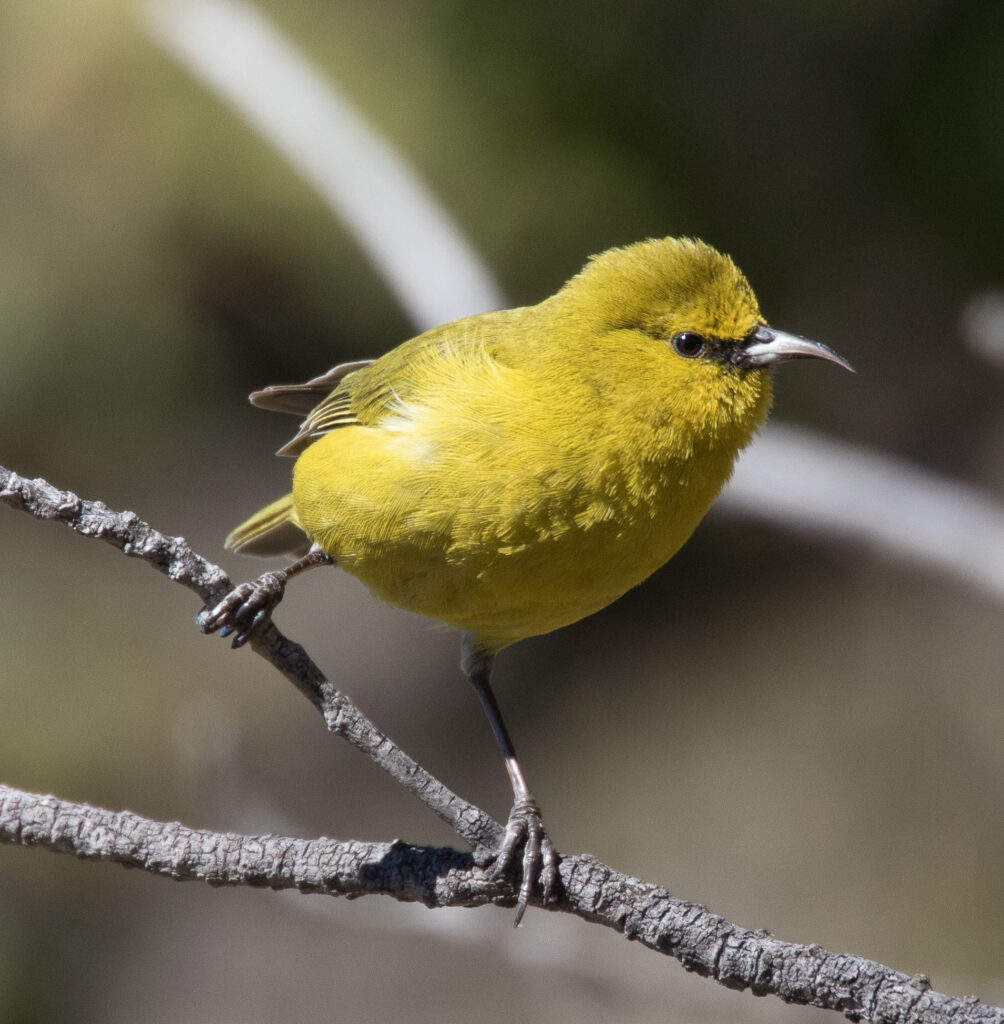
The Hawaii Amakihi has a back of green and yellow blend with olive-gray medium-length, rounded wings and medium-length, rounded tails that are rounded and colored olive green and grey on top but grey and with white accents below.
This bright-underside bird’s breast is yellow, and its face coloring is olive green with a long, narrow, and sharply curved black beak. These birds are around 4.5 inches long from head to tail, with 6.5 to 7.5 inches wings.
These birds are found in Hawaii (Big Island), Maui, and Molokai, where they mostly dwell, including dry woods and green lands and a large height range ranging from sea level to as high as about 8000 feet. They tend to feed on insects, spiders, and sweet nectar.
14. Hawaii Creeper
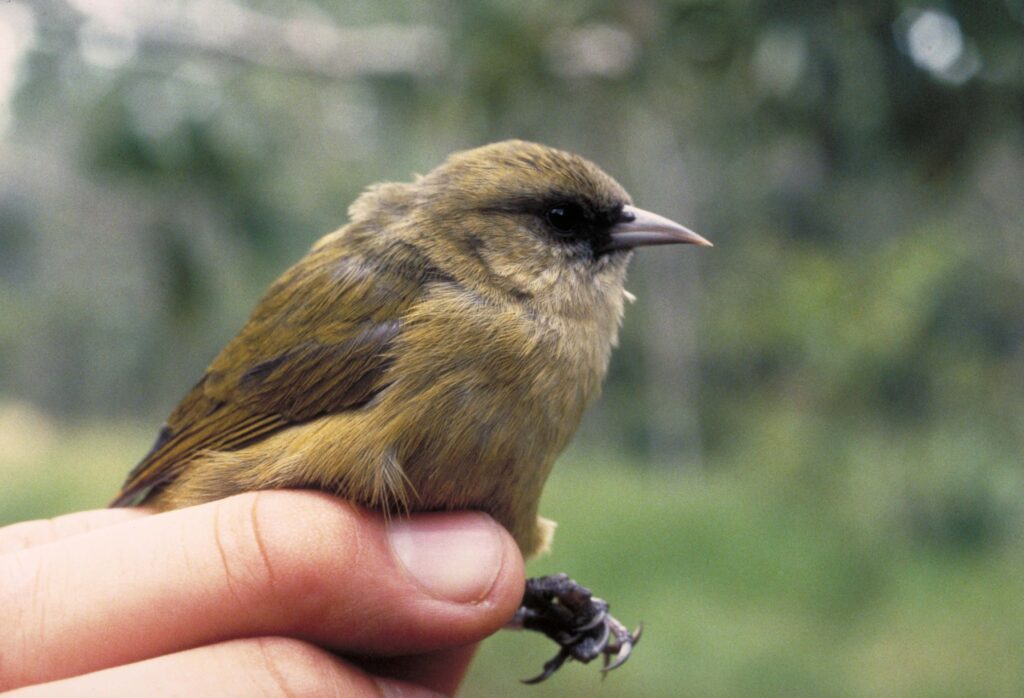
The backs of Hawaii Creepers are olive green, with short, rounded wings and notched tails. The wings and top of the tails will be a combination of greys and greens, with the bottom of the tail in black. The underside and chest of this bird are light green and yellow in color, and the cheeks and chin are white, with an olive green top section of the head.
Length
This bird has a lengthy, pointed, and conical black beak and a striking black mask. These little birds are around 4.5 inches long on average and have wings lengths 6 to 7 inches broad.
Habitat & Food
These birds are exclusively found on the Big Island of Hawaii and prefer to browse trees. They are fond of Koa trees during the spring season.
This bird enjoys eating insects, but its favorite meal is the nectar of the Koa tree.
15. Hawaiian Goose
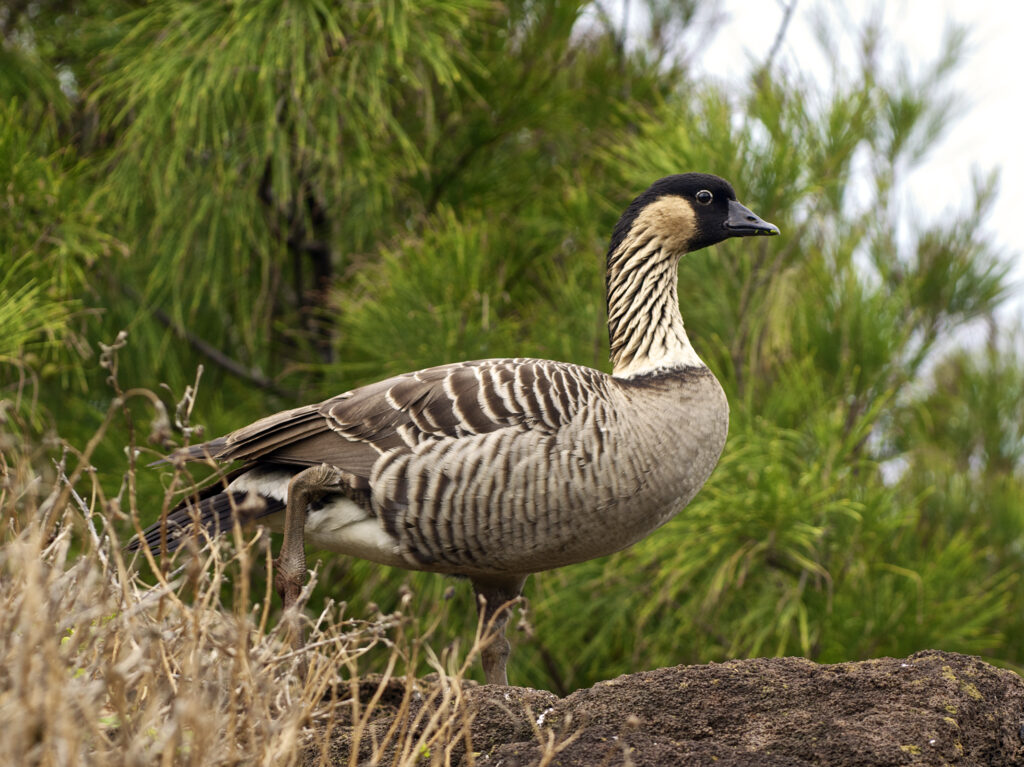
The Hawaiian goose is only found in the Hawaiian Islands, and it may be found in savannas, marshes, or any other place with trees or plants.
Apart from Kauai and Maui, they can be seen on all of Hawaii’s islands. Volcanoes, mountain ranges, meadows, and wetlands are all part of the goose’s habitat. Plants like cornflower, fennel, and pineapple weed may be found almost anywhere on the islands, and this bird consumes them.
16. Zebra Dove

The Zebra Dove is regarded as one of Hawaii’s most beautiful birds. This little pigeon-sized bird may be found across most of Asia and southern Australia, but it only resides on Kauai and Maui, two Hawaiian Islands.
Beaches, villages, mountains, jungles, and even urban environments like Honolulu’s Chinatown are home to Zebra Doves. Insects, seeds, nectar, fruit, and crops are among the foods consumed by these birds; they will also consume deceased animals such as snakes or lizards.
Finding their nesting locations, which are commonly lined up on transmission lines or along with wooden posts, is the easiest method to see them.
17. White-rumped Shama

The Hawaiian Islands are home to the White-rumped Shama, a tiny bird. The island of Kauai is the most regular site, but it has also been reported on Oahu and Molokai.
Because shamas are shy birds who spend a lot of time hidden in shrubs or deep woodland, they are more commonly heard than seen. They like to dwell among damp woods and may be found at elevations ranging from 3,000 to 9,000 feet above sea level.
White-rumped Shamas eat guava, strawberry tree blossoms, orchids, ginger flowers for fruit, and nectar. They’ve also been spotted ingesting aphid-secreted honeydew.
18. Rose-Ringed Parakeet

The Rose-ringed Parakeet is a moderately sized parrot that lives in a variety of habitats across the world. Their homeland is considered the Southeast of Asia and northern part of Australia, but they were imported to Hawaii and have lived here in Hawaii since then.
This bird is not only common in Hawaii, but it is also one of the most popular pets among locals. When eating agricultural crops, Rose-ringed Parakeets graze on seeds, fruits, and flowers, making them pests.
Food
This bird was brought to Hawaii by humans, but it now flourishes there thanks to its ability to adapt and feed on a range of foods such as seeds, berries, flowers, insects, and nectar.
19. Java Sparrow

The Java Sparrow is a little colorful finch with a distinctive orange hue that may be found worldwide. The Java sparrow, often known as the paddy bird or rice sparrow, is notorious for destroying fields in vast numbers.
As a result of its potentially destructive consequences, the Java sparrow is prohibited in many places in the United States where agriculture is essential.
Based on feeder Watch data, we can guess that the most common flock size of Java Sparrows at bird feeders in Hawaii is approximately 15 birds. The Java sparrow is also spotted at 85 percent of all participating bird feeders, making it Hawaii’s most prevalent bird at bird feeders.
20. Red-whiskered Bulbul

The Crested Bulbul, also known as the Red-whiskered Bulbul, is a medium-sized songbird that belongs to the bulbul family (Pycnonotidae), which also contains the Brownbul, Greenbul, and Red-vented Bulbul (see lower down the list!).
It is immediately identifiable with its dark brown color, white underparts, 20cm long body, lofty crest, and a red mark on the cheeks. However, it is native to Asia’s tropical regions, it has now expanded across the globe to include Hawaii and Florida, and California.
It is regarded as an exotic species in many locations, including Mauritius, Hawaii, where it threatens local plant life and aids the spread of alien species.
The Red-whiskered Bulbul is not a very social but shy species that wander in small groups. When the Feeder Watch data is analyzed, it reveals that the Hawaiian population only lives on Oahu Island and has been seen at two-thirds of the feeders. It is commonly seen flying in groups comprising three and accounts for about 5.6 percent of all birds seen.
Conclusion
We have discussed the various bird species that can be seen in Hawaii. Due to its special topography, it is home to a few special birds.
We have talked about their diet and the hotspots where you will be able to locate those birds. Besides, their mating pattern and their bodily features have also been discussed.
FAQ
Which Hawaiian Goose species is endangered?
The Hawaiian Goose is a critically endangered goose species.
Which Hawaiian bird species is shy?
The Red-whiskered Bulbul is not a very social but shy species.
Is the Java bird, also known as?
They are also known as paddy birds.
Which birds are known as Laysan canary?
The Laysan Finch, sometimes known as the ‘Laysan Canary,’
Last Updated on March 22, 2023 by Lily Aldrin

I would like way to ID birds by a description.